#Creating a Tumblr account is a straightforward process. Here’s a step-by-step guide on how to create one:
Explore tagged Tumblr posts
Text

#Creating a Tumblr account is a straightforward process. Here’s a step-by-step guide on how to create one:#1. **Go to Tumblr’s Website or Download the App**#- **Website**: Visit [tumblr.com](https://www.tumblr.com).#- **Mobile App**: Download the Tumblr app from the App Store (iOS) or Google Play Store (Android).#2. **Click on “Sign Up”**#- On the website or app#click or tap the **Sign Up** button.#3. **Enter Your Information**#- **Email**: Provide a valid email address. This will be used for verification and password recovery.#- **Password**: Create a strong password. Tumblr will indicate whether your password is strong enough.#- **Username**: Choose a unique username. Tumblr will notify you if your username is taken#and you can either modify it or select from suggestions. Your username will become part of your Tumblr URL (e.g.#username.tumblr.com).#4. **Verify You’re Not a Robot**#- You might need to complete a CAPTCHA to prove you’re human.#5. **Age Confirmation**#- Confirm that you’re at least 13 years old (Tumblr's minimum age requirement).#6. **Verify Your Email**#- Tumblr will send a confirmation email to the address you provided. Check your inbox and follow the instructions in the email to verify yo#7. **Personalize Your Blog**#- After verification#you can choose a profile picture#customize your blog’s appearance#and add a bio.#8. **Follow Blogs**#- Tumblr will suggest blogs for you to follow based on your interests. You can also skip this step and start exploring on your own.#Once your account is set up#you can start creating posts#reblogging content#and interacting with the Tumblr community.
0 notes
Text
Den of Geek's Best Books of 2019
https://ift.tt/2F47xc4
Here were the 20 books that meant the most to our Den of Geek contributors in 2019.
facebook
twitter
tumblr
To cover and consume popular culture in this era of #PeakContent is to constantly be making choices. This means it is more important now than ever to reflect on the ways in which "best of" lists, just like pop culture itself, are subjective—shaped by a group of people with specific identities, interests, and storytelling sensibilities.
Therefore, in presenting our list of the Best Books of 2019 to you, we note that these stories are not just what may have felt Important in a year when we are more desperate than ever to understand the seemingly increasingly destructive forces at work in the world, but also what meant the most to us personally.
Here are 20 books, in no particular order, that broke through the #PeakContent cacophony to mean something to our Den of Geek contributors this year...
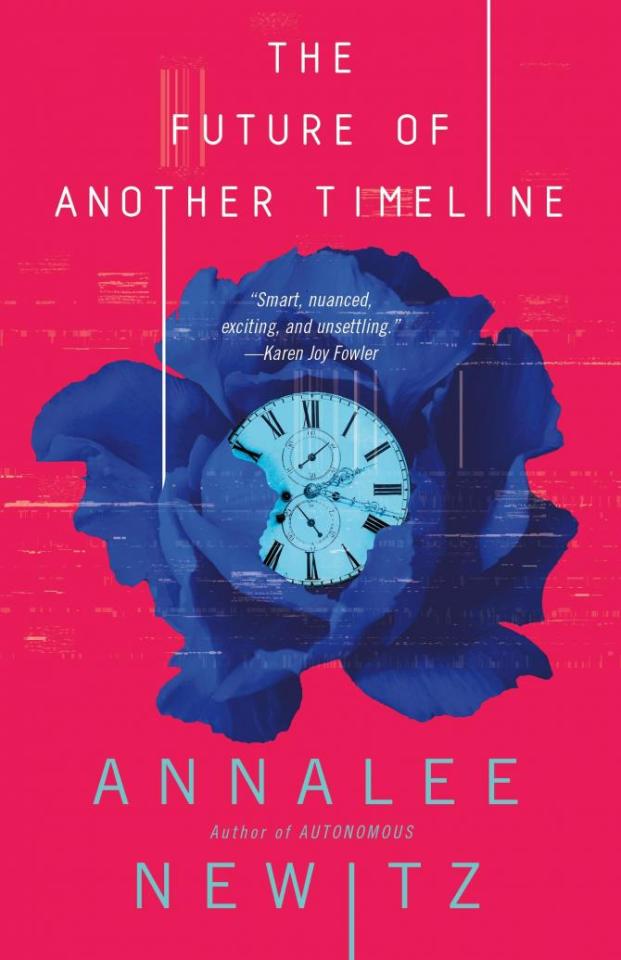
The Future of Another Timeline by Annalee Newitz
A time travel novel that soundly rejects the Great Man Theory of history, The Future of Another Timeline is uninterested in telling the same old story about a singular white dude traveling through time to heroically and simply save the day. In Annalee Newitz's second novel, making positive change in the timeline is mostly conducted by women and people of color, must be done collectively, and is a heck of a lot of work.
Told in alternating perspectives, The Future of Another Timeline follows middle-aged, time-traveling academic Tess and 17-year-old Beth, a high school student exploring the punk scene in 1992 California. Both characters are deeply informed by their interpersonal contexts. For Tess, that means the support of the Daughters of Harriet, a group of women and non-binary folks fighting to stop a group of time-traveling misogynists known as the Comstockers from securing a timeline in which women have no rights over their own bodies. For Beth, this means her high school friend-group, which represents an escape from her abusive home until they start seeking violent "solutions" to the abusive men in their communities.
read more: Autuonomous by Annalee Newitz — Robots, Love, and Identity Under Capitalism
Wonderfully nerdy and refreshingly radical, The Future of Another Timeline is the angry feminist time travel novel 2019 both needs and deserves, a speculative fiction experience that feels all too real in its depiction of how fragile women's rights can be while also representing the kind of collective action organizing that stands the best chance at saving us all.
"We deeply need hope right now because we're in a very precarious, self-destructive historical moment," Newitz told Den of Geek this year regarding the hopepunk movement. "I think of hopepunk as narrative therapy for historical trauma—it's a way to ease pain, to tell stories about the healing process as well as what has hurt us." The Future of Another Timeline is a story about what has hurt us and what can heal us.
- Kayti Burt
Read The Future of Another Timeline by Annalee Newitz

The Priory of the Orange Tree by Samantha Shannon
An assassin and a dragon-rider need to save the world from a dragon horde in this doorstopper. The Priory of the Orange Tree’s scenes more remarkably quick compared to the intimidating length of the book, with the author demonstrating a keen understanding of cliffhangers, dramatic timing, and creating characters who care about each other and their world.
Ead Duryan has been assigned to protect Queen Sabran of Inys, but also has to wrestle with the way Inys twisted a true story into an oppressive religion while hiding her true mission and her attraction to the queen. On the other side of the world, the dragon-rider Tané finds that her path to becoming a great warrior isn’t as straightforward as she had hoped, and that her choices will have global ramifications. Side characters, especially the grieving and miserable alchemist Niclays Roos, stuck with me long after I finished reading the book.
High fantasy is a hard sell for me lately. Monarchy, destined heroes, elves and dwarves—It doesn’t feel comfortable, it just feels old. I picked up Priory on the promise of dragons, though, hoping for something new to be done with the quintessential fantasy creature. Samantha Shannon delivered with fantasy that both embraces and improves on tropes. The world is a loosely changed version of our own, with fantasy cultures drawn from and paralleling real ones. It offers beautiful imagery and lush characterization. Explanations for how the magic of the world works and how it’s connected to that world’s history are smoothly threaded into the plot. The book also doesn’t lose sight of wonder, with enough cinematic fight scenes and detailed description of clothing for any HBO adaptation.
- Megan Crouse
Read The Priory of the Orange Tree by Samantha Shannon

Sal and Gabi Break the Universe by Carlos Hernandez
If you don't regularly read middle grade fiction, you may recognize Carlos Hernandez's name from his beautiful and well-received short story collection The Assimilated Cuban's Guide to Quantum Santeria, which came out a few years ago (or from his entertaining Twitter account). If you do read middle grade fiction, especially if you've been following the really excellent middle grade fantasy from the Read Riordan imprint, you've probably already met two of my very favorite characters of 2019... Sal and Gabi were breakaway leads in my fiction reading, and they're welcome to break my universe any time (especially since they're promising to fix it in May 2020).
Here's the conceit: middle school magician Sal has this uncanny ability to accidentally breach the multiverse. Sometimes this means he can do some pretty nifty tricks (which he passes off as illusions), like putting a dead chicken in a bully's locker. But it becomes a big problem when he keeps accidentally bringing back his Mami, who died several years ago. His father has remarried, and Sal loves his American Stepmom, but he misses his mother.
Sal is also a Type 1 diabetic, and when his ability to breach the multiverse makes him forget to regulate his blood sugar, he ends up in the hospital—something he's unfortunately used to. Initially, Gabi doesn't know about any of this, but she's the student council president, future journalist type who's not about to let any mystery lie without figuring it out. Because her baby brother is also in the hospital, fighting for his life, her story and Sal's become intertwined, and while multiverse hopping hijinks ensue, so does a story with so much heart that it's hard to put down.
I can't wait to spend more time with these characters as their adventures continue.
- Alana Joli-Abbott
Read Sal and Gabi Break the Universe by Carlos Hernandez
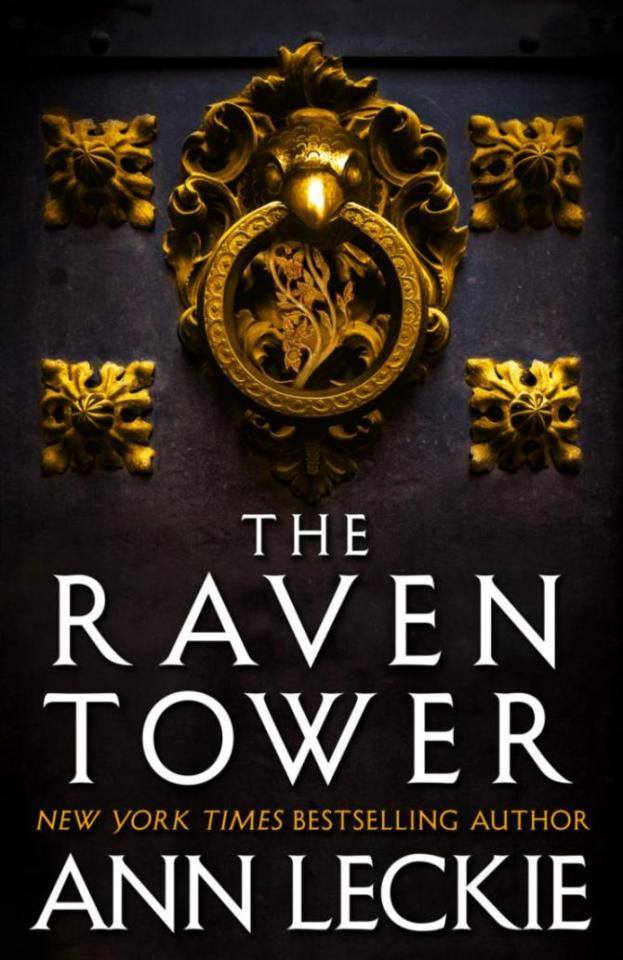
The Raven Tower by Ann Leckie
At first glance, Leckie’s newest book could not be more different than her Ancillary Justice series, not least of all because she’s smoothly stepped from science fiction to fantasy. The Raven Tower is a standalone fantasy novel, and a slim one at that; instead of a whole universe, its action encompasses two cities across a strait, and one family within them. But it’s how the story is told that cements this as Leckie’s brand of unique invention: A sentient rock god narrates in second-person to a trans protagonist.
Like with Breq, the spaceship AI constrained to one body, Leckie has once again pulled off a cunning experiment in giving voices to the most unusual of genre characters. The passages in which the stone god details its centuries of existence, and evolving relationships with human petitioners and priests, are some of this year’s most daring fantasy writing: slow and unhurried, filled with complex discussions of the power of language to change the very molecules of the world. Despite its brevity, The Raven Tower is wonderfully dense and thought-provoking.
What’s more, the human side of things is so authentically lived-in, a fantasy retelling of Hamlet that nonetheless is full of twists. In the city of Vastai, the Raven’s Lease, a human whose lifespan is entwined with that of the Raven god’s Instrument (an actual bird), has disappeared without paying up. As soldier-turned-heir’s-attendant Eolo investigates the truth, he and his master Mawat confront divine debt, issues of personhood, and the troubling disillusionment that the old ways and religions might be no more than cold comforts in an inexplicable world.
- Natalie Zutter
Read The Raven Tower by Ann Leckie

Normal People by Sally Rooney
From the jump, it's easy to understand why Sally Rooney's second novel, Normal People, has taken the literary world (and much of Book Twitter) by storm. It's a story of two teenagers, Connell and Marianne, growing up in vastly different circumstances West of Ireland. The book follows their magnetic pull on (or perhaps dire fascination with) one another as they grow up and make their way in the world.
At only 28, Rooney writes through her two protagonists to get at incisive commentary on that strange, fleeting feeling of obsessive youthful love, as well as class, family, what it means to "get out," and the many small ways people are awful to one another, while also loving one another rather tenderly. Considering how often love stories and the (young) women who tell them are diminished, it's also lovely to see Rooney discussed (mostly) with terms like "intellectual rigor."
Hulu is adapting Normal People as a limited series in 2020, so there's still time to read the book before the show starts. Reviewers talk of page turners, but Normal People is one that forces readers to cancel their plans and stay up until first light, ruining their ability to function for the next day, just to squeeze in a few more chapters, a few more lines of Rooney's entrancing prose. Much like the plot summary, the text might seem simple or even commonplace at first glance, but that is Rooney's great deception: she's working overtime to make sure you don't ever see her sweat. Normal People envelopes readers quietly, completely, and so steadily that you might not realize anything has happened until you come up for air hours later, or see the drip of a tear on the page.
- Delia Harrington
Read Normal People by Sally Rooney
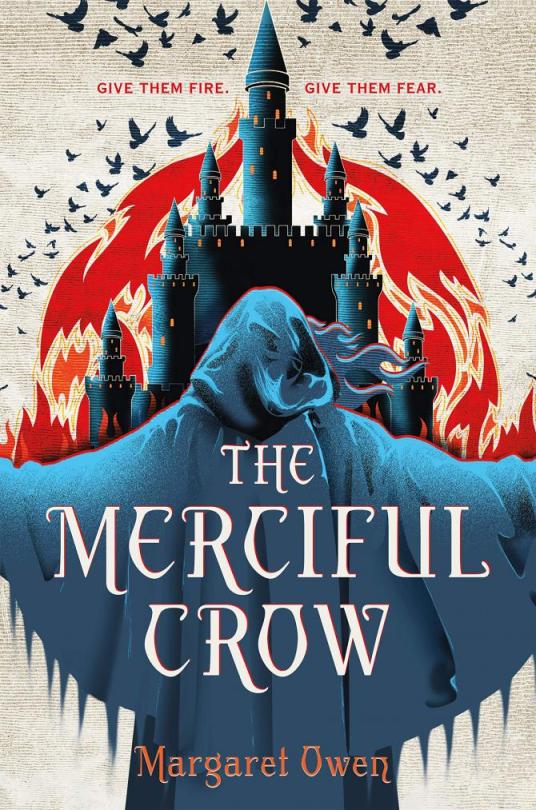
The Merciful Crow by Margaret Owen
Elaborate YA fantasies are all the rage right now, and 2019 had several great ones. But Margaret Owen’s debut novel The Merciful Crow is far and away the best of the lot, combining immersive storytelling, a diverse cast of characters, rich worldbuilding and a truly unique magical system into something that will stay with you long after you turn the last page. In short: Everyone in Sabor is divided into castes named after various birds and based on their particular Birthrights, or magical ability. The Crows, the lowest caste of undertakers and mercy-killers, perform magic using the teeth of the dead. It’s…very grim and very cool.
The story is fast-paced and exciting, and for all that it deals with typical fantasy themes (a girl coming into her power, a kingdom on the brink of revolution), The Merciful Crow fearlessly tackles issues of racism, persecution and the difficulties that face any marginalized group that’s mocked and looked down upon for being Other. Even better we see characters openly grapple with their own beliefs and question the things they’ve been taught to believe about others in a way that feels both compelling and natural. The book’s sequel, The Faithless Hawk, is due out this summer, and if it’s not already at the top of your most anticipated books for next year, it should be.
- Lacy Baugher
Read The Merciful Crow by Margaret Owen
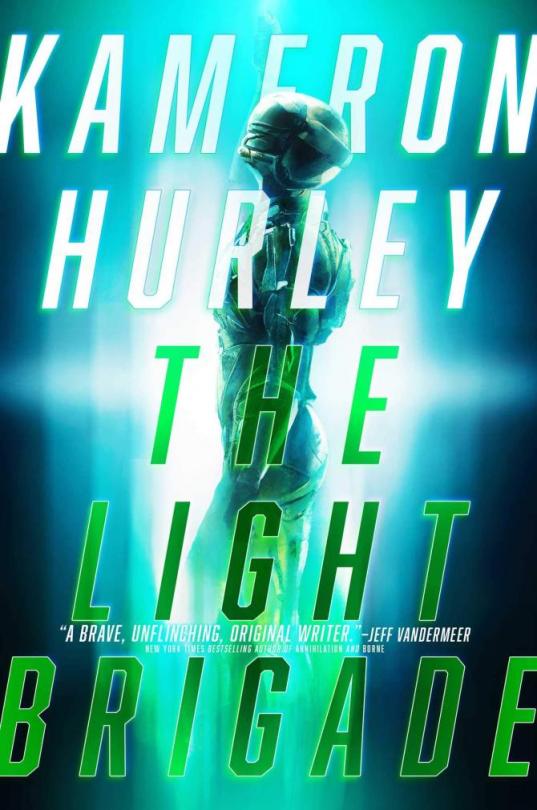
The Light Brigade by Kameron Hurley
Kameron Hurley’s The Stars Are Legion was one of my favorite books in 2017, so when I heard her next endeavor was a space marine time travel story, I could hardly wait. The Light Brigade delivered. It’s an exploration of the military industrial complex, the psychology of a soldier named Dietz, and a meticulously organized time travel story. The action scenes are vivid and grim, the dialogue energetic, the stakes clear. Hurley has a lot to say about the nature of war, of trauma, of the psychology of being thrown into unexpected battles every day. (The “light” of the title is a teleportation system that Dietz is experiencing as time jumps.)
This is a writer’s book, with an impressive structure: scenes end at what could have been abrupt moments but instead become a tool to increase suspense throughout the novel. The author has posted images of the chart she used to keep the time jumps in order, and you can tell the process of outlining the book was a feat of not just writing but also a kind of engineering, resulting in a convoluted but utterly understandable sequence of out-of-order events. It’s hard science fiction rooted in classics but utterly suitable for today.
- Megan Crouse
Read The Light Brigade by Kameron Hurley

The City in the Middle of the Night by Charlie Jane Anders
In a future generations after humanity has fled an uninhabitable Earth, humans live on January, a tidally-locked planet with two declining cities living in the twilight in-between the two extreme climates of the world...
Bordering the blistering side of the planet, we have Xiosphant, an authoritarian city with a constructed diurnal cycle where "timefulness" is sacred. Bordering the frozen side of the planet, we have Argelo, a libertarian society ruled by nine family-affiliated gangs who keep the city locked in a cycle of violence. As the generation ship technology brought with humanity decades before begins to fail, decline feels inevitable for both examples of human society.
We follow two main characters through the story: Sophie, a working class student studying at Xiosphant's university who is exiled into the night after taking the fall for the upper-class object of her affections Bianca. Rather than dying a lonely death, Sophie is saved by the crocodile-like telepathic aliens native to January. Elsewhere, we follow Mouth, a jaded smuggler from an otherwise extinct nomadic people known as the Citizens.
An exploration of working towards radical change in the face of climate catastrophe, personal and collective trauma, and interpersonal complications, The City in the Middle of the Night is a classically science fiction novel tapping into the most anxiety-inducing of contemporary struggles, and somehow finding a measure of hope there. "I can't do this thing anymore, where we live in a tiny space and pretend it's the whole world," Sophie tells Bianca in the novel. "People always have brand new reasons for doing the same thing over and over. I need to see something new."
- Kayti Burt
Read The City in the Middle of the Night by Charlie Jane Anders
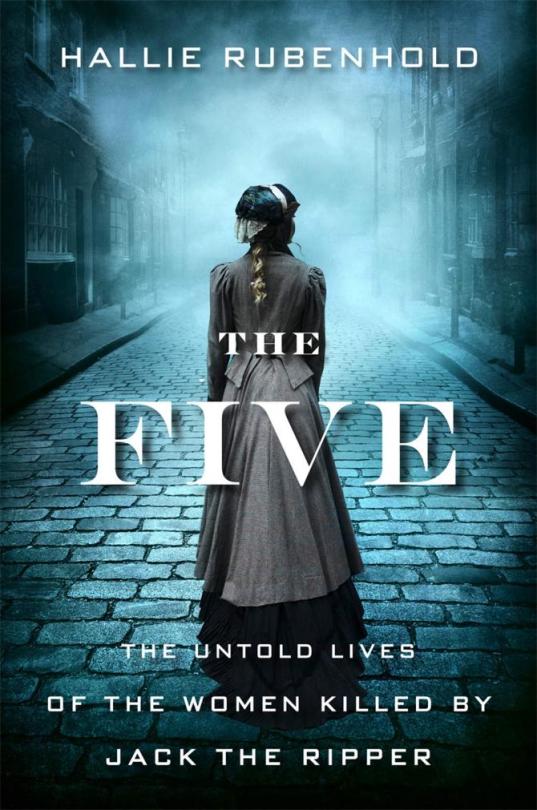
The Five: The Untold Lives of the Women Killed by Jack the Ripper
If you know the names Mary Ann Nichols, Annie Chapman, Elizabeth Stride, Catherine Eddowes, and Mary Jane Kelly it is likely only due to the reason for their deaths. These five women are the canonical victims of the infamous Jack the Ripper, and are generally only considered remarkable because of the fact that they died violently at the hands of a serial killer no one ever managed to catch.
Author Hallie Rubenhold’s book changes all of that. In the world of Ripper lore, The Five: The Untold Lives of the Women Killed By Jack the Ripper feels revelatory, in that it focuses on life, rather than death. It tells the real story of each of The Five, who they were, where they came from, and the tragic reasons that led them to a life on the streets of Victorian London. And it gives them their voices back, possibly for the first time since their deaths.
Meticulously researched, this book brings to life a group of women who have too long been silenced, or worse, reimagined in a way that suits history best. The majority of these women weren’t prostitutes, as the contemporary papers positioned them and history likes to remember them. They were women who struggled and scraped, who suffered repeated hardships and abandonments, who struggled with poverty and alcohol addiction, and who deserved better than deaths that left them forever in the shadow of a monster. Read this, and remember them.
- Lacy Baugher
Read The Five: The Untold Lives of the Women Killed by Jack the Ripper

The Grace Year by Kelly Liggett
In a year where Margaret Atwood herself wrote a sequel to The Handmaid’s Tale, it’s probably not that much of a shock that some of 2019’s most affecting stories have to do with female rage and empowerment. The Grace Year is a technically a YA novel, but it packs an outsize punch, reckoning with a dystopian future that nowadays feels far too much like it could in some way become reality.
read more: Feminist Science Fiction Novels to Read after The Handmaid's Tale
In the world of Garner County, young women are banished on their sixteenth birthday, condemned to spend their “grace year” on an isolated island to purge themselves of the dangerous and manipulative magic men believe they possess. The bones of Kim Liggett’s story are familiar ones, particularly the harmful culture these girls are born into and the cruel things they’re willing to do to one another in the name of maintaining it, but its story is ultimately one that points a way toward a future where change is possible. It’s not often you finish a story like this and genuinely feel hopeful, and yet, The Grace Year accomplishes this feat – all without giving anyone what you might call a happy ending.
- Lacy Baugher
Read The Grace Year by Kelly Liggett
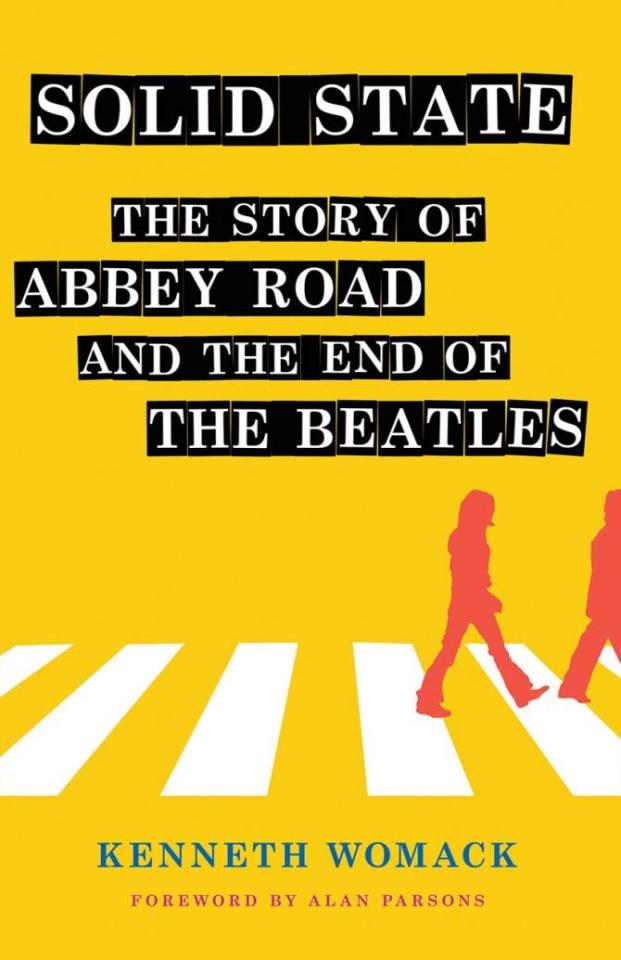
Solid State: The Story of Abbey Road and the End of the Beatles
The Beatles' film Let It Be appears to be a documentary on the breakup of a band. The album they recorded after it, Abbey Road, has always been touted as the album they made to go out on a high note. Kenneth Womack's Solid State: The Story of Abbey Road and The End of the Beatles, says that's not the case. They were recording what they thought was just their next album when they happened to break up. The band was especially excited about playing with new musical toys.
As should be evident by the name, the book starts with the sound board. The only eight track recording console at EMI. It was bright and shiny and new, and only a privileged few engineers were allowed to tinker with it, and they had to wear lab coats. The band was far away from the caper-chasing characters they played in A Hard Day’s Night and Help! but they were still fab enough to abscond with the apparatus and produce their flawless farewell to studio albums.
Almost the entire book is set in the studio. We learn about a car crash John Lennon, Yoko Ono, and their respective children survive from how it impacts the sessions. Paul McCartney's marriage happens barely out of reach of the soundproof panels and the Bed-In for Peace is placed far away from the mics. Even the breakup itself is captured as the same kind of ambient noise McCartney recorded on George Harrison's Moog synthesizer for the segues between songs. Like the surround sound created for Ringo Starr's only credited drum solo, the music is front and center.
Womack is a thorough researcher and interviewer who casts new light on old Beatles mythology. Several stories which are well-known to fans are challenged and a few more obscure bits are uncovered. The read itself is fun.
- Tony Sokol
Read Solid State: The Story of Abbey Road and the End of the Beatles

Last Ones Left Alive by Sarah Davis-Goff
Modern Irish literary greatness is alive and well, and anyone who reads Last Ones Left Alive can see why. Sarah Davis-Goff's spare post-apocalyptic tale follows Orpen on a largely solitary journey from her home on a remote island, away from the vicious, otherworldly creatures called the Skrake. The novel flashes back to Orpen's childhood alone on the island, with her Ma and Ma's wife, Maeve, as Orpen trained to survive against the unseen enemy while trying to decode what happened to the world, and fending off her own loneliness. In Orpen's present tense, she makes the difficult decision to search the mainland for help, accompanied by her dog, some chickens, and pulling a wheel barrow.
To say more would spoil it, and certainly part of the book's power is in the way it slowly reveals the truths of the Skrake, Orpen's upbringing, and what led her to go on the road. Beyond that, it's a story of self-reliance with feminism baked in, rather than discussed or layered on top. Orpen's instincts keep her safe and she is largely a solitary creature, so the novel has a desolate, almost animalistic quality to it that captures the Wild Atlantic Way and the feral nature of civilization gone to hell. Davis-Goff evokes the setting - both physical and emotional - so intensely that it feels like Orpen walks around with you even when you put the book down. It's a book that knows exactly what it set out to do, creates that world, and then cuts the reader off from it once the task at hand is finished, with the kind of efficiency Maeve taught Orpen to keep her alive.
- Delia Harrington
Read Last Ones Left Alive by Sarah Davis-Goff
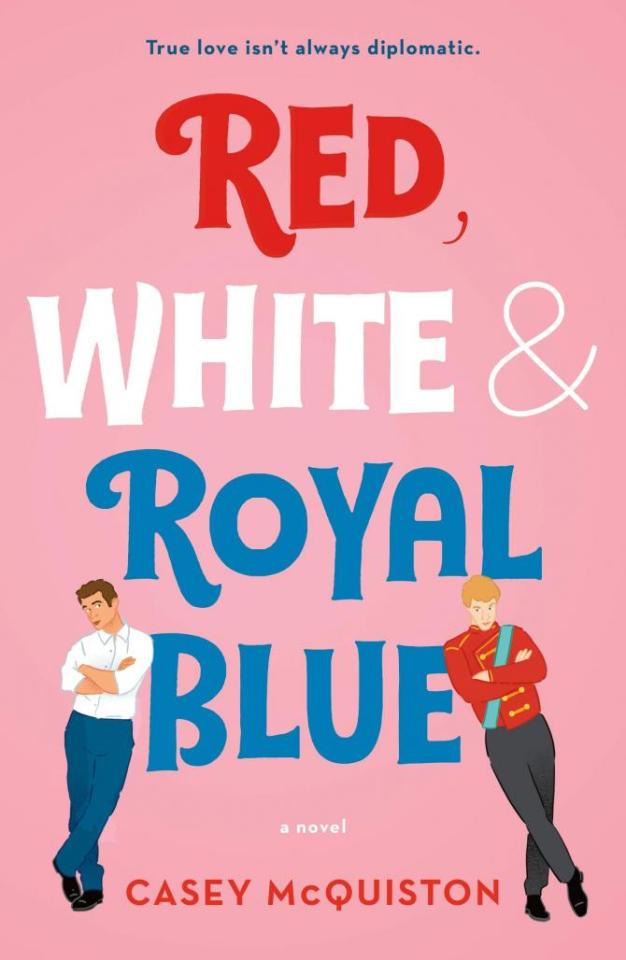
Red, White, and Royal Blue by Casey McQuiston
Set in an alternate universe where the United States elected a female divorcee Democrat from Texas to the presidency in 2016, Red, White, and Royal Blue follows the secret, enemies-to-lovers romance between first son Alex Claremont-Diaz and Prince of England Henry. In the process, author Casey McQuiston invites us to spend time in a world that is, as described in her author's note, "still believably fucked up, just a little better, a little more optimistic."
The result is an intensely cathartic reading experience that prioritizes comfort over grit, hope over pessimism, and empathy over bitterness, while also depicting tough subjects such as mental illness and civic exhaustation. In a year when to stay actively engaged in the news cycle often felt like a neverending battle, Red, White, and Royal Blue offered a brand of escapism that is all too rare in the mainstream: queer, filled with male characters who do their own emotional labor, and unapologetically millennial. The world needs more stories like this one, as well as the cultural space for more people to find guiltless pleasure in their enjoyment.
- Kayti Burt
Read Red, White, and Royal Blue by Casey McQuiston
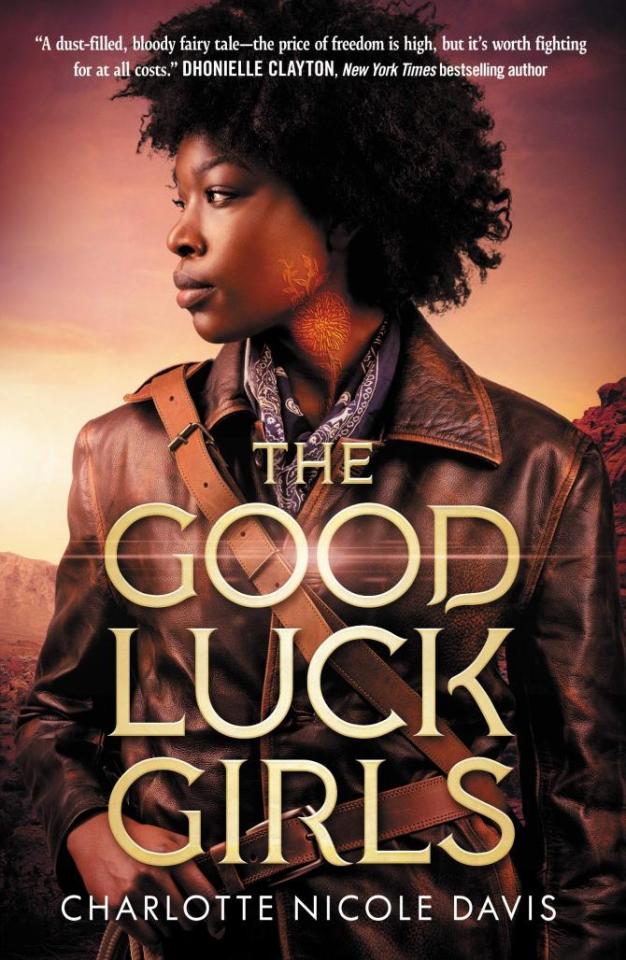
The Good Luck Girls by Charlotte Nicole Davis
Confession #1: I picked up this book on NetGalley because it has a gorgeous cover. Confession #2: My NetGalley copy expired when I was 80 pages from the end. Confession #3: I went out and purchased the book the same day my NetGalley copy expired, because I had to finish it.
The Good Luck Girls is Davis' debut novel, and it packs an incredible punch. Set in an alternate world—possibly a future dystopia on a different planet, but there are fantasy elements that make it hard to place entirely—where people with shadows have more rights than those who don't, the book centers on five young women fleeing life in a brothel.
Dustblood, or shadowless, girls are frequently sold by poor families into "welcome houses," given the promise of a better life: regular meals, fancy clothes, luxury. The condition, of course, is that they have no rights over their own bodies, and they are never allowed to leave, branded with a magical tattoo that reveals their identities, and glows and burns if they try to cover it.
When Clementine accidentally kills a violent brag, she, her sister, and their friends make a daring escape, turning to a life of banditry in an effort to reach the legendary Lady Ghost, who can offer them a different future—if she's real. The result is a twisted Weird Western that feels like the Wild West, while twisting its tropes and delivering a story about victims taking back their own destinies and carving a new path toward a better future.
- Alana Joli-Abbott
Read The Good Luck Girls by Charlotte Nicole Davis
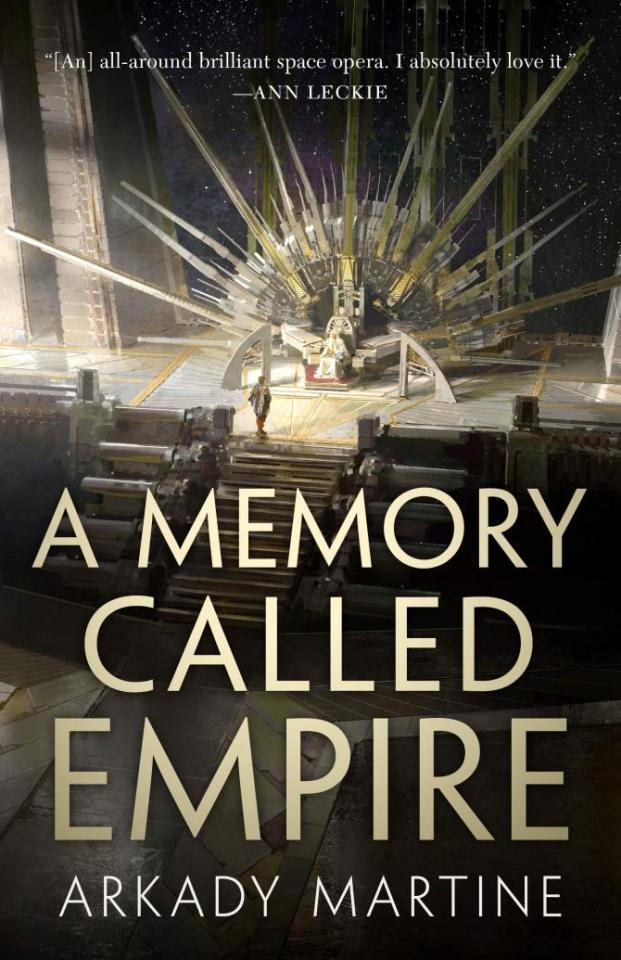
A Memory Called Empire by Arkady Martine
There are two phrases from this year that my friends and I shout at one another whenever we’re in the same room. One flesh, one end (from Tamsyn Muir’s Gideon the Ninth) is a fun little rallying cry, but it is this piece of poetry from Martine’s debut novel that makes me tear up every time I utter it: "Released, I am a spear in the hands of the sun."
While I have always enjoyed space opera well enough, considering how many stories fit within the subgenre, this is the first book where I found myself delighting in all of the trappings. Martine dives deep into this byzantine far-future universe, clearly so excited about every detail that you cannot help but be equally enthusiastic… even when you rationally know that you should not be so captivated by colonialism.
But that’s the point. Teixcalaanli civilization, with its alien-yet-logical naming conventions and obsession with its own epic poetry, is so addictively interesting that readers are automatically as emotionally invested as diplomat Mahit Dzmare. After an upbringing on the empire’s fringes in independent Lsel Station, Mahit finally gets to visit Teixcalaan’s famed city-planet capital, only to be thrust into a political thriller full of mysterious deaths, sex-as-diplomacy, and an emperor with an unusual agenda. Not to mention, Mahit has her own cultural capital that she must keep from getting assimilated into the empire like everything else in the universe.
Read A Memory Called Empire knowing as little as possible, aside from the fact that you will meet a bevy of damn competent women and find yourself murmuring about spears released in no time. The fact that Teixcalaan is a culture obsessed with repeating the patterns of its epic stories in contemporary life is so endearingly geeky and very relatable to our present moment.
- Natalie Zutter
Read A Memory Called Empire by Arkady Martine
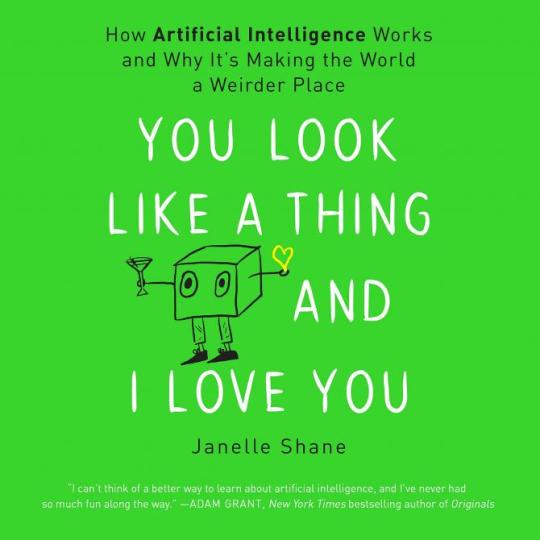
You Look Like A Thing and I Love You: How Artificial Intelligence Works
Janelle Shane became internet-famous through her blog AI Weirdness and its social media offshoots. Her wacky computer-generated lists have been making me laugh for years, so I was quick to jump on her first paper book of artificial intelligence and humor. Half of the appeal are the lists of computer-generated things: the title comes from a list of comically nonsensical and occasionally sweet pickup lines. There are plenty of lists like these in the book, providing a break in the science for some high-quality random humor. The networks she trains don’t know what words they should be putting together, so they surprise in a way that a human could never quite do.
The other half of the appeal is the science. Shane outlines what in our daily lives counts as artificial intelligence and what doesn’t, why asking “what the program was thinking” is a nonsensical question, and how artificial intelligence (specifically, certain kinds of machine learning) actually works. Ideas are explained with precision, clarity, and ease. The science is also funny without being twee. This was both one of the most informative and most fun books I read all year. To be one would be nice; to be both is astonishing.
- Megan Crouse
Read You Look Like A Thing and I Love You: How Artificial Intelligence Works

Frankissstein by Jeanette Winterson
I had never read any of Winterson’s work, but her modern, queer retelling—not just of Mary Shelley’s Frankenstein, but of the entire process around writing the first science fiction novel—makes clear just how lacking all other Frankenstein adaptations are in innovation and relatability. Most concern the doctor and his creature locked in a cat-and-mouse game of wits and horror, yet still so predictable that they all blur together whether period piece or futuristic cyborg story or police procedural. Yet Winterson’s take is so radically different from its forebears that you find yourself not guessing how the story will turn out, despite the fact that she lays out the narrative beats in the beginning and follows them—with the occasional detour to a sex robot convention or London’s waterlogged underground tunnels.
read more: 16 Best Fall Reads
Because Winterson knows that the heart of the story is in Mary’s life, pockmarked by so much loss, and in her frankly incredible writing process. Instead of the two Frankensteins, the interweaving duo in this book is writer Mary Shelley and Ry Shelley, a trans doctor who finds himself falling for the charismatic, otherworldly transhumanist Victor Stein. Winterson lays out the blueprints for the story by first visiting Mary, her husband Percy, the insufferable Lord Byron, her bimbo stepsister Claire, and the awkward Doctor Polidari at that life-changing rainy weekend writing retreat on Lake Geneva—which, honestly, has all the makings of a Mary Shelley biopic right there. Then, once you know enough about the characters, Winterson leaps ahead 200 years to the familiar strangers of Ry, Victor, and sex robot designer Ron Lord and his perky creation Claire.
Frankissstein is a creepy, sexy, soggy, surprisingly hilarious demonstration of how time is just a circle and history repeats itself. Except this time with cryogenically frozen millionaires and filthy-mouthed pleasure bots.
- Natalie Zutter
Read Frankissstein by Jeanette Winterson

Protect the Prince by Jennifer Estep
I may have raved a little bit last year about Jennifer Estep's series launcher Kill the Queen. Estep has written in a number of genres over her career, but Kill the Queen showed me that epic fantasy is her true home; it went delightfully above my expectations, creating Evie, a compelling protagonist who's both a reluctant hero and a natural one: she takes risks for others without thought and only truly fears her own destiny, because for years she's been convinced that she's not worth claiming a loftier mantle. There's also a gladiator troupe, shapeshifting magic that creates a whole new mold for what those powers can look like, and some excellent romantic tension and humor.
Estep's sequel, Protect the Prince, raises the stakes, thrusting Evie deeper into the intrigue between kingdoms as she hopes to forge a lasting peace, while also driving a wedge between her and her love interest, a bastard prince who—like Evie—has been told his whole life he'll never amount to much. Evie must manage the nobles of her own kingdom, prevent war with other nations, and fight against the constant sabotage of power-hungry Mortan king, whose spies have been plaguing Evie's life even longer than she realized, and who are continuing to try to kill her.
Even as Evie sets her own plans into action, playing the long game against her enemies, the story leaves room for romance and friendship, and for Evie to find a way to become the Winter Queen everyone expects her to be. The trilogy wraps in March, 2020, with Crush the King, and you can bet I've already got that on preorder.
- Alana Joli-Abbott
Read Protect the Prince by Jennifer Estep
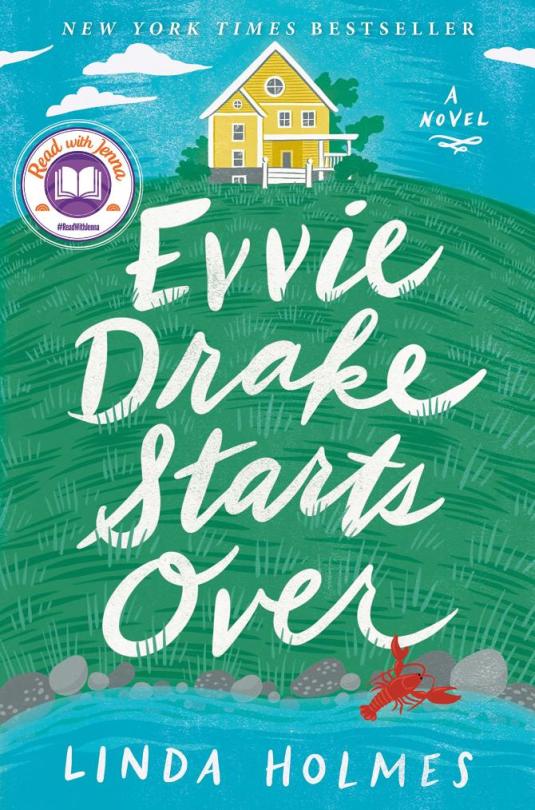
Evvie Drake Starts Over by Linda Holmes
The book lays it out for you right away: Evvie (her name rhymes with Chevy) was leaving her husband when she got the call that he had died. That emotional quagmire is where NPR's Linda Holmes, host of Pop Culture Happy Hour, plants her witty and warm romantic comedy of a novel. Evvie rents out a room in her house in Maine to Dean, a former Major League Baseball pitcher hiding out from the world after he left the game when he woke up one day with a bad case of the yips and simply couldn't throw anymore.
Grounded in the complicated reality of grief, the book has so much to say about platonic mixed-gender best friends, single parenting, re-learning how to relate to parents as an adult, and life in a small town. There's so much room in the world for smartly written adult romance, and Holmes knows how to bring the heat when she wants to. Yes, it's a romance, but there are no short cuts, easy answers, or guarantees of a perfect happy ending. Evvie and Dean test one another emotionally in ways that feel organic to their characters, rather than plot-driven, and their victories are earned on the page. Charming, hopeful, and with great emotional depth, reading Evvie Drake Starts Over means getting all the joy of a romcom without having to sacrifice on quality or consent.
- Delia Harrington
Read Evvie Drake Starts Over by Linda Holmes
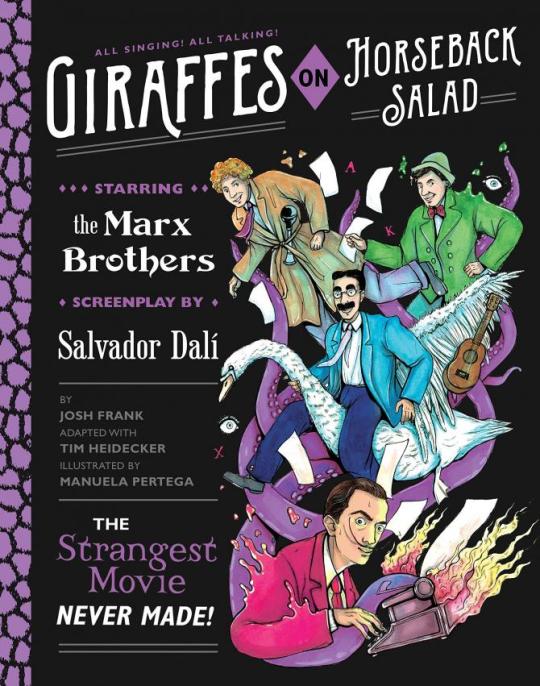
Giraffes on Horseback Salad by Josh Frank & Tim Heidecker
The Marx Brothers were at the peak of their popularity when Salvador Dalí presented then with a screenplay called "The Surrealist Woman." It was only a few pages and they turned it down for not being funny enough, but it still carries mythical significance in both the art world and cinema history. Josh Frank's graphic novel Giraffes on Horseback Salad fleshes out the sparse notes to present the how the film would have looked on the screen.
Giraffes on Horseback Salad is a love story. But the world hangs in the loss of balance. The book includes a preface which tells the story of the artists relationships with each other and placing the film them in a historic context. It would have been made after A Night At The Opera and A Day At The Races, which were produced by Irving Thalberg, who died before this would have been up for consideration and Metro-Goldwyn-Mayer declared it too expensive and too surreal. There are quite a few surprises.
The biggest is Harpo speaks. Not only does he speak but people hang on to his every word. Gone are the curly locks and tattered overcoat. Here Harpo’s Jimmy is an important man who wears impressive suits and has an A-list significant other who ultimately pales in significance to the lady of surrealism. The illustrations by Spanish surrealistic artist Manuela Pertega, capture what could have been possible to put on the screens. The surrealistic jokes added by comedian Tim Heidecker may explain why Groucho passed on the work, but you can see the magic such a film may have conjured. Even the name of the book's publisher, Quirk, feeds into the skewered reality.
- Tony Sokol
Read Giraffes on Horseback Salad by Josh Frank and Tim Heidecker
Read and download the Den of Geek Lost In Space Special Edition Magazine right here!
facebook
twitter
tumblr

Feature Kayti Burt Alana Joli Abbott Delia Harrington Megan Crouse Tony Sokol Lacy Baugher Natalie Zutter
Dec 30, 2019
from Books https://ift.tt/37lr7MV
2 notes
·
View notes
Text
How to (Realistically) Start Selling Products on a WordPress Site in 2019
https://120profit.com/?p=2462&utm_source=SocialAutoPoster&utm_medium=Social&utm_campaign=Tumblr According to Statista in 2017, annual retail ecommerce sales worldwide reached $2.3 trillion, and are projected to double by 2021. Global retail ecommerce sales increased by roughly 25% year-over-year from 2017 to 2018. Ecommerce sales accounted for 12% of the total global retail sales for 2018, and are expected to increase to 17.5% in 2021. So what does this all mean? Essentially, ecommerce isn’t going away. If you’re thinking about launching an online business, there’s no better time to start than today. Companies with larger budgets than what you may currently have access to have paved a straightforward path for those just getting started. The question is: which ecommerce platform should you use to build your ecommerce website? The answer depends a lot on your specific product (or service) offerings and goals. Is WordPress the Right Ecommerce Platform for You? Though enterprise platforms provide a seamless experience for customers and ecommerce administrators alike, you don’t need a large budget to create a minimum viable ecommerce website. The multitude of options has made it possible for anyone to launch an online store — no developer necessary. Managed platforms can take out the guesswork involved with everything from web hosting, to listing new products, and incorporating a high-converting design. The trade off compared to a more DIY approach to building your ecommerce website? Some managed platforms exist in a closed ecosystem. Your growth (and creative freedom) is ultimately limited by the rules and customization options that exist as part of the platform you’re involved with. There is another way: Many aspiring ecommerce entrepreneurs turn to the WordPress content management system (CMS) because its open source software makes it possible to completely tailor an ecommerce website to your exact needs. Perhaps because of this, WordPress is the most popular CMS — powering 30% of the internet. WordPress Ecommerce Pros Some pros of using WordPress as an ecommerce site include: 1. WordPress is easy to use. Although on its own, WordPress isn’t a managed SaaS ecommerce platform like BigCommerce (which takes care of many complex technical processes for you), the WordPress core code is easy to use and install. Depending on your web host, the whole setup process takes just a few clicks! 2. WordPress provides a lot of freedom. Managed platforms like Shopify do allow some customization, but only up to a certain point. Also, because they manage every part of the process, you’re completely at their mercy if something breaks and they take their time fixing things. Having the power to make decisions about all of the moving parts involved in creating an ecommerce website enables you to do exactly what you want. 3. WordPress offers flexible customization options. On a related note, flexibility is one of the best features of WordPress. Thanks to thousands of pre-built WordPress themes, extensions, and plugins available, you can foreseeably create a website for any type of purpose: business, portfolio, or ecommerce (to name a few). Since WordPress is open source, if you notice a gap in the market, you’re free to create (or commission) your own solution! Alex Denning, Founder, Ellipsis Marketing – Marketing for WordPress businesses “We work with clients selling products on top of WordPress, so a key theme is the extending WordPress! It’s the flexibility, adaptability, and thriving community which is why our clients’ customers choose WordPress, and is WordPress’ great strength.” 4. WordPress is available at a low cost (starting at free). Because WordPress is open source, and there are many free plugins available, overhead costs are as low as you need them to be. This makes it easy to just get started — and scale up as your business grows. WordPress Ecommerce Cons But just like any other ecommerce platform, WordPress is not without drawbacks. Here are some of the cons involved with using WordPress for ecommerce: 1. WordPress is not an ecommerce management system (out of the box). Ecommerce functionality does not ship with WordPress out of the box. Yes, you can add ecommerce functionality to WordPress through the use of plugins. That said, even the best ecommerce plugins don’t compare to the robust experience a dedicated ecommerce platform provides. 2. WordPress is a frequent target for hackers. WordPress was made for blogging — not ecommerce. Because it’s such a popular CMS, WordPress is a frequent target of hacking attacks. That said, there are various plugins, services, and best practices that users can follow to minimize WordPress security issues. 3. WordPress requires frequent updates. Managed, SaaS ecommerce platforms automatically update their platform regularly, without the need for you to take any additional actions. On the other hand, WordPress requires updates not just for the core software, but also for plugins and themes. These updates help to protect against hacking attacks while also (ideally but not always) improving compatibility across all active plugins and themes. Properly updating WordPress involves data backup and staging to test for compatibility issues, which can become time-consuming as you scale up your ecommerce website. How to Get Started Selling on WordPress 1. Decide what to sell. Before making a final decision regarding an ecommerce platform or specific website design, you must first be clear on what you’re going to sell. This decision will ultimately help to guide your ideal technical implementation process. While you’re thinking about what to sell, answering these questions can help to guide you in the right direction: Are you selling physical or digital products? Physical products may require ordering inventory and designating storage space (unless you’re dropshipping for other businesses), while digital products (such as online courses) take time to develop, but delivery can be automated (with no inventory space required). What are you passionate about? Whether it’s something you already enjoy (e.g. you’re a yogi that wants to sell yoga equipment, or a cook that that wants to share their love for food), or a gap in the market that you see needs to be filled, being passionate about what you’re selling can make all the difference in pushing yourself through the hard times. If you can demonstrate expertise in your niche, that can also help with sales. What makes your products different from the others? Before you start selling, you have to think of a unique selling proposition (USP) to differentiate your products/market from others. Scott Bolinger, Co-Founder, AppPresser “Don’t just build a product because you know how to code, start with a need. What is a need that real people have that you can fulfill? If another product already exists for that need, then find a unique position. If the other product has all the features under the sun, go for lightweight and do one thing really well. Positioning is a really important concept that most in this space ignore.” Still looking for more inspiration to help you decide what to sell? Consider how WordPress ecommerce experts have used WordPress to make money: Karol K, CodeinWP and Themeisle “I use WordPress to sell my services as a freelance blogger and writer. WordPress helps by making it easy for prospective clients to contact me directly and share what they need doing. It really is super simple. No unnecessary steps or confusing processes. Plus, the site works perfectly on all devices.” Patrick Rauland, eCommerce Educator at LinkedIn Learning “I sell info products. My WordPress sites show that I’m an expert and I sell those services in various places, either on my site, on a platform, or on a micro site.” Brandon Kidd, President at Folsom Creative, Inc “I work with clients who sell products ranging from kids bikes to snacks and beverages.” Lindsay Halsey, co-founder of Pathfinder SEO “Subscriptions. WordPress powers our marketing website and our guided SEO platform.” Bob Dunn, Blogger & Podcaster, BobWP “Right now I’m not selling anything, but over the years I have sold consulting, training, memberships, courses, workshops and a lot more using WordPress.” 2. Set up your website. If you’re starting from scratch, the basic steps to start a WordPress website involve: Choosing a domain name. In general, when it comes to picking domain names, one that ends in .com is advisable. If the name you’re eyeing is taken, try other variations. If you’ve exhausted all options, you can try .net, .org, or .biz extensions. Another best practice: make your domain name short, sweet, and easy to remember. Signing up for a web hosting service. The web host is where your WordPress website’s files are located. When you sign up for hosting, the service sometimes comes with free domain registration. Look for signs of reliability in terms of little downtime, great customer service, and a good reputation. Downloading/installing the WordPress CMS. In most cases, setup will be managed completely within your web host, without requiring you to take care of technical back end processes like creating the database. 3. Choose an ecommerce platform. Turning WordPress into an ecommerce platform involves the use of plugins to extend it’s core functionality. Since WordPress is open source, you could build your own ecommerce plugin, but we’d recommend instead using one of these available market options: WooCommerce WooCommerce is the most popular WordPress ecommerce plugin, not just because it’s powerful or free to use, but also because of it’s close association with WordPress. WooThemes (the creators of the WooCommerce plugin) was acquired by Automattic (creators of WordPress.com) in 2015. Since this acquisition by Automattic, WooCommerce’s popularity increased, to the point that it now powers roughly 20% of all ecommerce websites online (sources vary on the exact number). WooCommerce allows you to sell both physical and digital products and integrates with most payment gateways. Like WordPress, WooCommerce is: Easy to use. Open Source Flexible: There are thousands of WooCommerce-specific themes and extensions (both paid and free) available on the market. Scalable: Whether you’re selling 5 products or 5000, WooCommerce can work for you. Here to stay: WooCommerce has a large user base and a pool of contributors from all over the world that constantly work to make it better. On a related note, many of these contributors offer up their time without a promise of payment because of their love for the platform (a sentiment that also extends to assisting users who seek WordPress help). Matt Ahlgren, Co-Founder & Online Marketer at Website Hosting Rating “WooCommerce needs a serious competitor in this space and WordPress ecommerce store owners right now are pretty much forced to use WooCommerce. I for sure will pay close attention to BigCommerce and what they will do in the WordPress ecommerce space.” Easy Digital Downloads Easy Digital Downloads offers simplified ecommerce functionality for those looking to monetize digital products. Like WooCommerce, Easy Digital Downloads is technically free — though you’ll need to purchase a paid plan to take advantage of extensions that make it a more useful ecommerce solution. Kinsta breaks down the major differences between WooCommerce and Easy Digital Downloads if you’re deliberating between the two. Brian, CMO, Kinsta “When most think of WordPress ecommerce, they think of WooCommerce and Easy Digital Downloads. While there are some other solutions, I think there is room for more. However, I have a feeling it will be hard to break into this space and educate users to use both WordPress and BigCommerce. But time will tell. Still encouraged to see them giving it a go. Offloading the ecommerce functionality from WordPress is something that has not yet really been successfully done yet.” BigCommerce For WordPress BigCommerce is one of the largest managed ecommerce platforms in the world today. The platform offers web hosting, payment integration, customer support, and all the other tools you need to quickly launch an ecommerce store. Now, BigCommerce is crossing over to WordPress with the BigCommerce plugin. Prior to the launch of this new plugin, it was impossible to host your ecommerce store on both a managed platform and WordPress. But no longer must you start on one platform and switch to another as your needs change: the BigCommerce plugin enables more powerful ecommerce functionality on a user-friendly CMS that the majority of website creators are already familiar with. 4. Set up your WordPress store. Once you’ve made a decision regarding the best WordPress plugin for your ecommerce needs, it’s time to bring everything together. There are two complementary aspects to consider during this process: The front end: Choosing your WordPress theme (design), creating content, and customizing your website in terms of the visuals shoppers are exposed to. The back end: Configuring store data including payments, shipping, tax rates, coupons and discounts — all technical details that visitors don’t see. Note that whatever you decide on now can absolutely be changed later on, as you grow and figure out what works best for your online store. That said, there are certain things, like your website’s technical architecture, that become more of a pain to change if not initially setup with a solid foundation. Also, though these initial website configuration steps can be overwhelming, don’t neglect to address basic information such as the store’s name, physical address (if relevant), and other contact information. 5. Pressure test your store. Before publically launching your store, you need to make sure that everything is working correctly. Part of this process will involve your own tests but it’s a good idea to also involve friends, family, and colleagues as beta user testers. Here are a few things you’ll want to make sure to test before launch: The checkout process. Are orders coming through as they should? Does your payment gateway work properly? For WordPress sites using the BigCommerce plugin, this is handled by the platform. Responsiveness. Many of today’s online sales happen on devices instead of desktop computers. Does your website scale nicely for different screen resolutions? Google’s Mobile Friendly Test can point out any major issues. Site speed. Ecommerce customers are impatient and a slow website is a turnoff to them. Google’s PageSpeed Insights can point out any major issues. Grammar/spelling. Since you can’t physically meet with all visitors, your website should reflect your best possible first impression. Poor spelling and grammar can hurt trust (and ultimately, your ability to sell). Usability. In other words, does your navigation make sense? Do you have any broken links that might confuse visitors? To figure out where problems might occur, it helps to observe an unbiased third party as they try to make sense of your website. Tessa Kriesel, Developer Outreach Manager, Pantheon “No one wants to wait around for an online store to load. They are looking for something specific and if you can not deliver that to them in a decent amount of time you are destined to lose that sale.” 6. Spread the word. Once you feel good about your ecommerce website, it’s time to launch! To be sure, there are a million and one different ways to start spreading the word. Start by sharing your project on your own personal social networks and make sure that you’ve also locked down branded social media handles for your business. Tips From Top Experts To Sell Products on WordPress Successfully Here’s what the WordPress experts had to say about finding WordPress ecommerce success: Bob Dunn, Blogger & Podcaster, BobWP “WordPress gives you excellent tools to create an ecommerce site technically. My best tip is to understand that it goes so much more beyond that. Have your ideas well thought out and make sure you have done your research. Create awesome content and get a marketing plan in place. And most of all, ask for help if you need it along the way.” Brandon Kidd, President at Folsom Creative, Inc “Make sure that your product page is clean and clear. Your product data and descriptions should be complete. Things like product photos should be detailed and interactive. Most importantly, your buy button and price should stand out, attracting visitors to take a buying action.” Rebecca Gill, Vice President of Digital Marketing Strategy at emagine “Dig in and learn your ecommerce software, then supplement this information with basic information for search engine optimization. So many store owners focus only on their products and forget about the software and search. That’s a major mistake.” Katie Keith, Co-Founder at Barn2 “Don’t just use WordPress with the standard ecommerce layouts that come with your theme, as that may not be the best way to sell your products. For example, most themes list products in a grid layout with big images, which may not be appropriate for less visual products, wholesale sales, or technical products where the customer needs to see more information without having to click through to the single product page.” She adds, “You can achieve greater success by adding extra WordPress plugins that display your products in more effective ways that will attract your target market, such as product table plugins, or advanced search and filter plugins that make it easier to find products in your store.” Joe Howard, Head Buff at WP Buffs “Make it as easy as possible for your potential customers to trust you. Whether that means hyper-honest blogging, having live chat on the website or making your “sales” process more about education, this is crucial. People buy from companies they trust so that should be one of the top priorities for any eCommerce shop.” Karol K, CodeinWP and Themeisle “Let the platform do what it does best. Don’t over-complicate things. Showcase your products in the most clear way possible and focus on letting the product shine, rather than making the design of the site itself shine in its place. WordPress allows you to do that, especially once you start customizing the way you present your products on the site.” Matt Ahlgren, Co-Founder & Online Marketer at Website Hosting Rating “My best tip for ensuring WordPress ecommerce success is to optimize your category and product pages. These are the bread and butter type of pages for any ecommerce site, including yours. But all too often these type of pages get neglected.” Patrick Rauland, Ecommerce Educator at LinkedIn Learning “WordPress is one of the best platforms to produce content. Use that to its full advantage. Create content that brings people to your site. With the right content a percentage of your audience will convert into paying customers. As soon as you get that working, double down! Make *more* content and get *more* people to your site. You can attract a ton of organic traffic to buy your products/services.” Brian, CMO, Kinsta “My one suggestion is never to stop testing new things. This includes optimization for performance (load times), improving abandoned cart rates, A/B testing landing and product pages, and changing up sales copy. All of this will have a direct impact on your revenue. A data-driven ecommerce store is one that will rise above the rest.” While you’re putting together your promotional plan, consider these tips to grow your email list. Using BigCommerce for WordPress BigCommerce is one of the largest ecommerce platforms in the world today. But will it work for you to achieve your WordPress ecommerce dreams? Let’s consider the advantages of using BigCommerce for WordPress: 1. BigCommerce + WordPress = the best of both worlds. With WordPress on the front end and BigCommerce in the backend, you can free up server resources from things like category management, processing payments, and managing logistics — all while maintaining your WordPress website design exactly as you want it. This solution is also referred to as “headless commerce”, and as a result of the processes at work behind it, your website will load more quickly. 2. BigCommerce offers a standalone solution for ecommerce. Unlike other plugins (like WooCommerce) that require extensions to activate additional functionality, you get access to both common and advanced ecommerce features by using the standalone BigCommerce plugin. 3. Using BigCommerce with WordPress creates a scalable ecommerce solution. Whether you’re starting out with a few products or are managing a large product catalog, BigCommerce works well in either situation. 4. BigCommerce offers better credit card processing rates… …When compared to other popular managed ecommerce platforms, with over 65 payment integrations. 5. BigCommerce is PCI-compliant. PCI-compliance is the information security standard for organizations that handle credit card payments — necessary for running a successful ecommerce website. 6. BigCommerce offers seamless account management. You can manage multiple WordPress sites from a single BigCommerce account. 7. The BigCommerce Plugin supports Google AMP and Gutenberg. There are many popular, longer-standing WordPress plugins that can’t make this same claim. Patrick Rauland, Ecommerce Educator at LinkedIn Learning. “I’m impressed BigCommerce supported Gutenberg immediately on release. They were ahead of the curve and if they continue to innovate ahead of others they could be an even bigger powerhouse.” How BigCommerce Works with WordPress To use BigCommerce on WordPress, you will need: A WordPress website with an installed and activated BigCommerce plugin. A BigCommerce store. If you don’t have one, the plugin can create a trial store for you. Additional considerations during setup: Configured settings for your store’s shipping, payments and tax. The BigCommerce plugin will analyze existing settings and will issue a warning if there are elements that need to be fixed. Optimized One-Page Checkout enabled in your store’s Checkout Settings. An active SSL certificate on your WordPress website (if you plan on using Embedded Checkout). This is also a requirement to rank in relevant Google search, as HTTPS (enabled by SSL) has become an official ranking factor. In general, the BigCommerce plugin works by creating a new post for each product, and that post serves as the product detail page. These products can be referenced by WordPress attributes that include SKU, brand, category, featured products, and recently added. Essentially, your WordPress site acts as a channel in BigCommerce, which means you can connect multiple WordPress ecommerce stores from one BigCommerce account. Each order that comes through can be filtered and sorted according to the channel, and you can specify which products are available on which channels from the BigCommerce products area on your dashboard. For those with existing BigCommerce shops, the plugin also creates a copy of your product catalog and stores them as custom post types in WordPress. The BigCommerce plugin creates account pages, as well as pages for your cart, checkout, profiles, gift certificates, account profiles, and order history (among others). 7 WordPress Experts on the BigCommerce WordPress plugin Here’s what WordPress experts are saying about the BigCommerce WordPress plugin. Brandon Kidd, President at Folsom Creative, Inc “There are a lot of people out there running BigCommerce and the thought of migrating into WooCommerce can be daunting. The BigCommerce WordPress Plugin will be a great way for businesses to build interactive websites using everything that makes WordPress great while also bolting in their BigCommerce products. Win/win!” Katie Keith, Co-Founder at Barn2 “Since WordPress powers over 30% of the web, it’s an excellent idea for other platforms to integrate with it. BigCommerce has lots of fantastic features that will offer an interesting alternative for people wanting to build an e-commerce website with WordPress.” Joe Howard, Head Buff at WP Buffs “I think it makes a lot of sense! With WordPress gaining so much market share over the past few years, it makes sense that BigCommerce wanted to integrate even more into the ecosystem. We’ll have to wait to see how they impact the market; it’s going to come down to their execution, marketing and community outreach success but I’m excited to see how they try to compete with WooCommerce on that front.” Chad Barnes, Head Honcho & SEO Content Strategist at SEO Skyrocket “If the BigCommerce solution pulls the styles from WordPress themes, frameworks, page builders, and site builders with little to no custom code, AND supplies functionality that eliminates the need for 35+ plugins, AND solves the speed problem particularly larger WooCommerce stores seem to face, then BigCommerce could be the ecommerce game changer for WordPress.” Alex Denning, Founder, Ellipsis Marketing – Marketing for WordPress businesses “Competition is great, and this should be very healthy for the WordPress ecommerce ecosystem! I’m looking forward to seeing how this makes all solutions get better; in doing so we should see WordPress in general become a better choice for ecommerce.” Lindsay Halsey, co-founder of Pathfinder SEO “We’re excited to see BigCommerce in the WordPress plugin library. Having done ecommerce SEO in BigCommerce and WordPress separately, we’re excited about the opportunity for ecommerce websites to utilize BigCommerce + Yoast SEO via WordPress.” Scott Bolinger, Co-Founder, AppPresser “I’m a fan of moving a lot of ecommerce functionality off the WordPress database and onto something that can handle it better. It seems to work well for those who want to control their own hosting but need higher performance from their shop.” For more information about setup, refer to BigCommerce’s WordPress plugin support documentation. WordPress Sites using BigCommerce To Sell Online The BigCommerce WordPress plugin is still relatively new to market as of this publication, but new ecommerce brands are taking notice. Here are a few websites that you can refer to that use a mix of WordPress’ CMS and BigCommerce’s ecommerce functionality: 1. Firewire Surfboards. Firewire Surfboards was established in 2006 by Bert Berger, with a talented group of former surf clothing industry executives. The group came together with one goal in mind: to put the future under surfers feet. Because these surfboards are made by surfing experts and enthusiasts, they’re designed to be lighter, faster, and more flexible. The company also operates with a focus on eco-friendliness, surfboards are crafted with sustainable materials. 11-time world surf champion Kelly Slater took notice and eventually bought a majority stake in the company in 2016, just a few months after opening Surf Ranch — one of the most sought-after surfing destinations in California. Surf Ranch uses Firewire boards. Because of this, Surf Ranch Global Marketing Manager Chris Grow thought of incorporating the two, which led his team to launch a content and commerce digital experience. They chose BigCommerce because it was an established name in ecommerce that produced an innovative and cost-effective solution for their needs. 2. Carluccio’s. Carluccio’s is a restaurant chain that first opened in London in 1999 with the aim of offering authentic Italian cuisine at sensible prices. Since its founding, Carluccio’s opened 75 branches within the UK and Ireland, and 14 branches across Turkey and the Middle East. Carluccio’s website features the menu and restaurant locations where you can make reservations. They recently partnered with BigCommerce to add an online shop in an effort to amp up their online presence. The Marketing Director at Carluccio’s, James Backhouse says, “Our aim was to develop a website that did the fundamentals really well – whilst also demonstrating the stories behind the brand and products, and linking seamlessly into ecommerce.” They chose BigCommerce for its ability to integrate with WordPress. “Launching a website of this calibre without adding technical complexity or extra people into our team was a massive accomplishment that was only possible through BigCommerce”, he adds. Final Thoughts: How to Sell on WordPress: A New Option from BigCommerce As easy as it has become to build an ecommerce website, starting with the right foundation will make all the difference when it comes to eventually scaling up. Part of this has to do with things like design and website structure — the rest has to do with the right backend ecommerce platform powering your sales. Headless commerce offers exciting new possibilities that improve the user experience (both for visitors and website administrators), without sacrificing powerful ecommerce functionality – thanks to its fusion with a flexible CMS. What does the future hold for headless commerce? We’d love to hear your predictions in the comments! 120profit.com - https://120profit.com/?p=2462&utm_source=SocialAutoPoster&utm_medium=Social&utm_campaign=Tumblr
0 notes
Text
How to Design an App for E-commerce By Ben Lee
FirmBee / Pixabay
Every type of product we make has a set of design and function rules we need to abide by. The same kinds of parameters exist when venturing into the wonderful world of E-commerce apps. With that in mind, it’s in our best interest to identify such foundational guidelines and blueprint any design process in alignment with these. Creating an app can cost anywhere from $18,000 to $28,000, and that’s just an estimate. Thus, diving blindly into app-making is not something we recommend, and considering Rootstrap’s core business proposition is centered on development (be it mobile or web apps), you can take our advice with a high degree of confidence.
“Let’s take a step back. Back to the question of what does an app cost? First, let’s make sure that we’ve answered the question of why do you need an app? What is the purpose of your app? What is the goal of your app? Is there something in existence like a third party solution that can be sufficient for what you’re trying to do in the digital space, like a Mobile Roadie or Square, Squarespace or Etsy, or something that wouldn’t require you to build a custom app?” – What Does An App Cost?
First, though, we have to answer the fundamental question about any mobile app development project: should you or shouldn’t you? We firmly stand behind the notion that any e-commerce business serious about scaling up growth and revenue needs to seriously consider making a move into the app space.
In order to do so, however, you’ll need to go back to those rules and regulations mentioned earlier. Luckily enough, we have all the insider info on the best ways to go about the designing process, and Rootstrap is all about the power of communication. From the innovative minds of our agile ninjas to you and yours, here is a specialty-made guide for e-commerce app design, complete with all the top tips you’ll need on your way to a stellar app.
Tip #1: The Interface
Ah, the user interface. Easily the aspect of an e-commerce app that demands the most careful consideration and planning. After all, the end user will be the one to decide if your app succeeds or not, and it is unlikely to make it against the endless competition if the user experience isn’t top of the line. Clean, accessible, and a pleasure to use are the primary descriptive goals you need to be aiming for when designing that e-commerce app. Best way to get your users to concur with all three? A basic interface.
Ignore that front-end design tendency to overcompensate with heaps of nifty pop-outs and to fill all the white space with cutting-edge icons and the like. Instead, design with the ambition to make the chance of your customers buying something as high as physically possible. Look to emphasize your business’s latest sales or reductions on the home screen, and overall work to make that interface inviting for a shopper.
Take a cue from Apple, which has outsold PC competitors in the consumer tech market for years: while most PC companies have dozens or hundreds of products, Apple rarely features more than 3 core products in a given product line. Simplicity sells – it’s as simple as that.
Tip #2: Navigation
Another important thing to consider when designing a mobile e-commerce app is screen size. Compared to a web application on a desktop, mobile app space is small. This automatically means that there are limits to how much-shown content is possible at one given time. So, concerning e-commerce, this means that there are limits to how much can be displayed within the app navigation. It won’t have the same impact as a desktop, full-screen e-commerce experience which can put all promotions and categories up at once.
Hence, you need to choose wisely what content or promotions to display, and ensure that the discovery process to get to all your other lists or categories is as explicit as can be. Place the most significant of your categories in that navigation so that high traffic to those areas of the app is guaranteed. Another top tip here is to make each menu item one word, only. Less is more, friends.
Tip #3: Process
Let’s get real for a second here. Who in their right mind has patience while online shopping? In today’s day and time, speed is optimized for e-commerce shopping, and that applies times ten for mobile e-commerce apps. As a result of this, it’s only logical that the checkout process of your app needs to be as swift as can be. Not only is it essential to make the end-game fast and easy, but this rule also goes for that first step – the user sign-up.
Our top tip here is one that you’ll find universally in almost all mobile e-commerce apps out there today – the use of social media for that signup stage. Yep, it’s as straightforward as allowing a user to link a choice social media account; typical offerings include Facebook, Twitter, Instagram, and even Tumblr in some rare cases. That little step is absolutely going to have a positive effect on the number of shoppers on your app, and you’re almost guaranteed to see an uptick in overall purchases, too.
Throw in an auto-complete in the mix so they can spend even less time with registering if they decide not to do it via social, and case closed.
Tip #4: Speed Shop
Ever been on an E-commerce app that didn’t have a little cart icon above every commercial product? The answer to that question is (hopefully!) no. That’s because an “Add to Cart” option is a sheer must have for any e-commerce venture. Don’t risk losing out on a successful sale because the user interested isn’t able to pop a product in their cart faster than the speed of light (or, as relatively close to that aim as humanly possible).
Tip #5: Less is More
You’ll find that any e-commerce app that’s overloaded with images and pop-ups will inevitably performing worse than it’s competitors who minimize those aspects in a user’s shopping experience. Not only is an excessive amount of images distracting to a customer, but too much design or content slows down the performance and speed of the app. Keep the number of high-res photos to as few as possible per screen, and you’ll avoid irritating or missing out on a sale because of speed or information overload.
Tip #6: Patience
We’ve brought up a customer’s patience – or lack of it, really – a few times already in this piece, for a really excellent reason. Expectations are everything in the e-commerce industry, and if your app doesn’t meet the base ones, you can forget about building a base of loyal customers.
Perhaps the most significant expectation a user can have on an e-commerce app is that a purchase will take little to no time. One brilliant way to let a shopper feel confident and in control of their progress in a sale is to pop in a handy progress bar. This enables the person on the other end of the screen to know how many more steps are left, which really helps in growing customer confidence.
Tip #7: Power of Favorites
Put yourself in your customer’s shoes: when you are looking through the products of an online store, what type of options do you prefer having available to you? Definitely, a favorite in the e-commerce process is the ability to “favorite” items. You’ll see it on the huge e-commerce platforms in varying forms; Amazon, for example, makes use of this concept with a personalized Wish List you can add or remove items to for a later date. You can also use this list to personalize marketing emails, letting customers know when an item on their favorites list is on sale. Even better – make it so these favorited products can be compiled into a shareable list, so that come holiday time, your customers can send these to relatives or friends. Sold!
Tip #8: Science
Ever heard of the “thumb zone?” It’s a concept coined by Steven Hoober that more and more mobile developers are adopting into their app design processes. The idea is that apps should be designed with the consideration of how users use their thumbs in mind along the way. Quite frankly, it’s a bit of added genius that only works to improve the customer experience further. According to Fluid, the best way to design a “thumb-friendly experience” is to follow three key UX principles:
Clutter-free
Hidden menus, dropdowns, and sticky footnotes are the big winners here. These are innovative ways to sneak in content but keep that “thumb zone” optimized.
Gesture controls
Think of the gestures a user makes with their thumbs to navigate an app on a mobile device. Locking and unlocking of screens, opening, sliding from page view to page view are all requirements for a customer to use an app. These steps will ask for thumb tapping, pinching, zoom control, etc. Make sure to experiment with these and test the number of gestures needed for the use of your app from start to finish of a purchase. Minimize the number of gestures a person may need.
Movement
Going back to navigation here, the developer in charge of creating your e-commerce app needs to be super conscious about limiting the navigation points to be within the “thumb zone.” Studies have concluded that most of the world (70 – 90% even!) are right-handed, so it’s worth designing user navigation with this right-hand thumb zone at the forefront of your mind.
Tip #9: Safety
Keep that user data safe! This is the best thing you can do for your user, considering they are providing you with not only personal data but financial data, too. You need your user to feel secure about entrusting your app and business with their information, so do everything possible regarding security and verification to be able to provide them with those assurances.
Tip #10: Make it Yours
Our last essential tip for you today is the most fun of them all: invest the time and resources into making your e-commerce app stand out in the fray. Whatever personal spin you can put on that design that works within these guidelines, do it!
via Technology & Innovation Articles on Business 2 Community http://bit.ly/2MEzTvm
from WordPress http://bit.ly/2z0CAW7 via IFTTT
0 notes